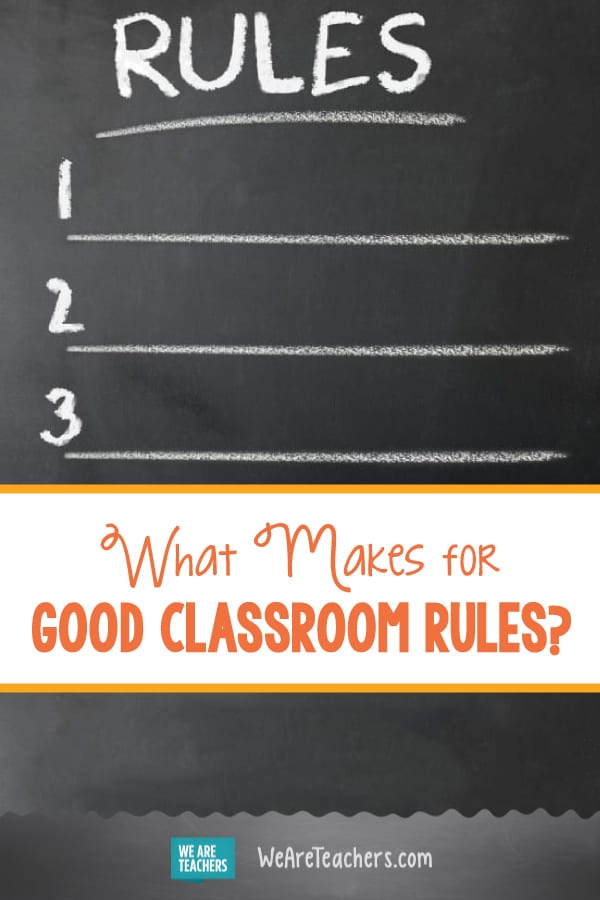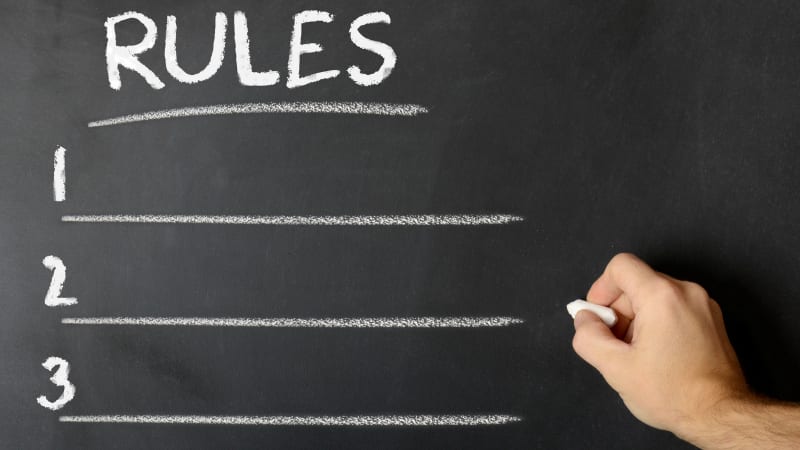Classroom rules can set the tone for your year from the beginning. When students have clear and direct expectations, they’re able to stay focused and on task. Our Facebook group, WeAreTeachers First Years, was recently talking about classroom rules, and we saw some fellow educators offering some great tips and advice. Here are some things to keep in mind (plus some awesome resources and free printables). We hope these ideas help you to fine-tune your classroom rules.
Keep it simple.

Teachers told us this time and time again. You don’t want to give your students too much or overwhelm them with a long list of rules. Sometimes it’s best to just stay focused on a few key things. Kindness, respect, and doing your best are all on the short list, and you can find them all on this set of posters. Get them for free here.
Try the five Ps.
A teacher in our Facebook group suggested this one. Taelur writes, “I use the 5 Ps: positive, polite, prepared, productive, and prompt. I have students work with their group to rotate around the room and write down examples of each word. As an exit ticket, they write which rule means the most to them, their reason why, and group them together on my whiteboard. I read off a few sticky notes for each rule. Most kids identify polite and productive as the most important, but every word ends up with a few responses at the very least.”
[contextly_auto_sidebar]
Get help from the pups.

Do dogs and puppies make everything better? Actually, we think they can, which is why we put rules on some creative posters featuring dogs. Get the full set of 14 posters right here.
Stick to these three Rs.
Emma is a member of our First Years group on Facebook , and she says she uses just three key rules in her classroom. They are the three Rs, and they can serve students well at any age. (They can serve many adults well, too!)
- First: Be Ready
- Second: Be Respectful
- Third: Be Responsible
Take advice from Oprah. 
Yes, Oprah! Or choose another celebrity or athlete who has a special connection to your students. Quotes from these figures can be a surprisingly good starting point for classroom rules.
Focus on respect.
Belen is a teacher in our First Years group on Facebook , and she puts the biggest emphasis on respect. In fact, it’s really her sole rule in the classroom, and it’s one she focuses on year after year. She writes, “Respect me, respect the classroom, and respect each other.”
Create your rules together, and document it on an anchor chart.
Positive classroom culture starts with the kids, and creating a group anchor chart about rules is a collaborative way to get started. Here are some anchor chart ideas that will help you set rules with your students and get them involved in the classroom.
Know what rules you don’t want to enforce.

Gum chewing fine with you as long as it doesn’t get in the way of learning? Great! Be clear about that with your students, too.
Never underestimate the power of kindness.
Tina keeps it simple—be kind to each other. “I tell my students that I can’t control what goes on on the other side of that door, but in this classroom, we will be kind to each other and take care of each other.”
She says it’s up to the teacher to lead by example, which she tries to do every day. She even makes it a point to always says please and thank you to her students. Tina believes that when you start and end with kindness, everything else falls into place.
We’d love to hear. What classroom rules work best for you? Come and share in our WeAreTeachers HELPLINE group on Facebook.
Plus, check out our classroom tech rules poster set.



